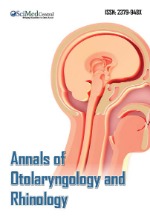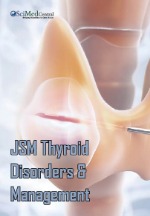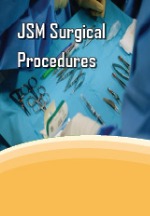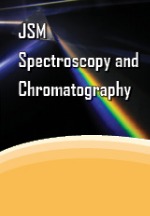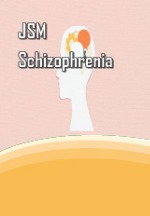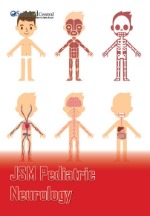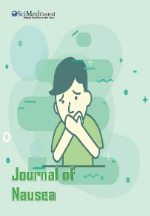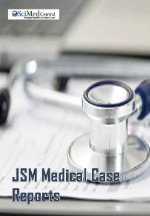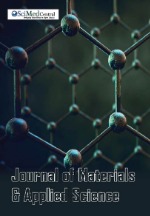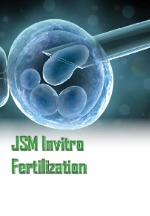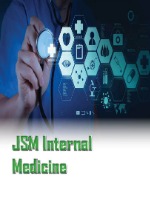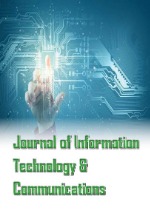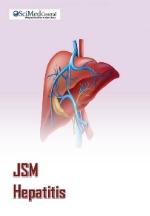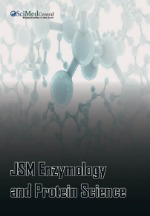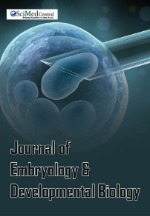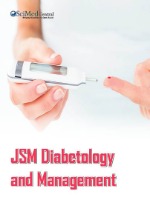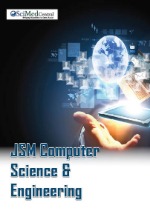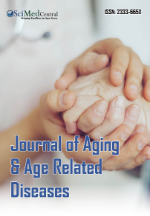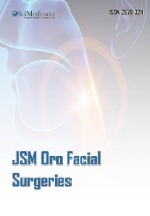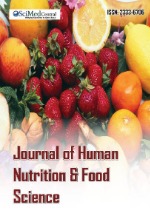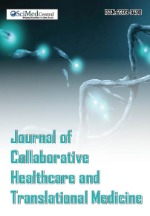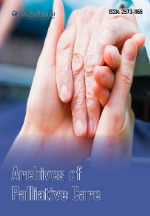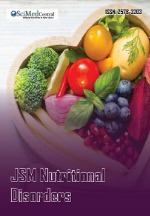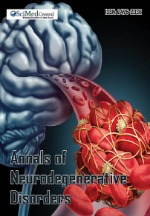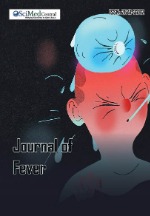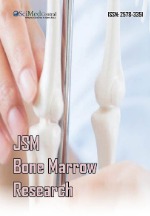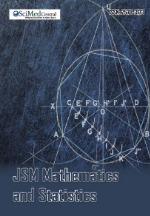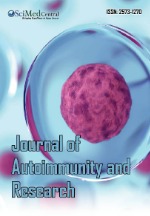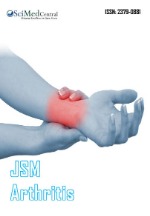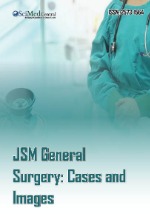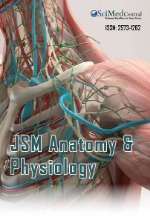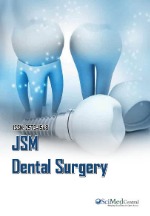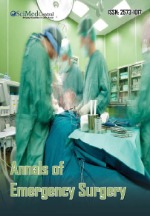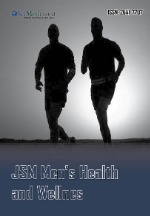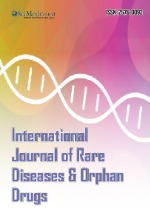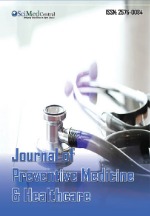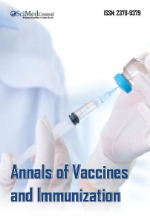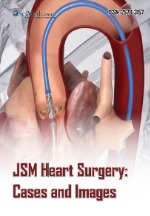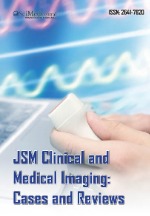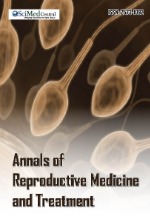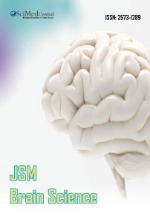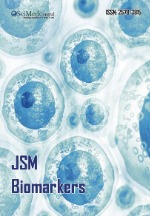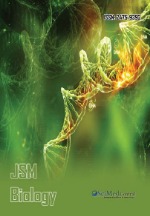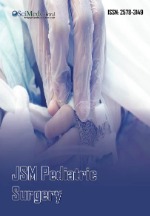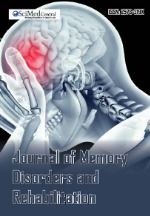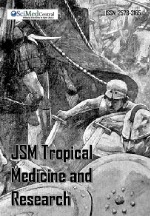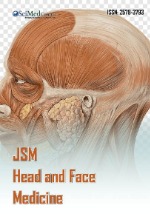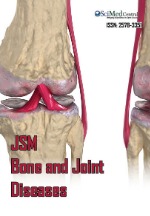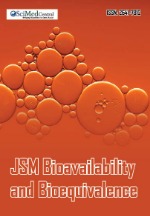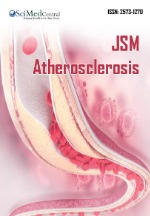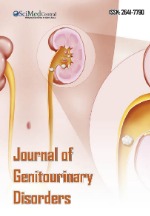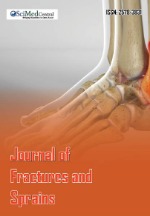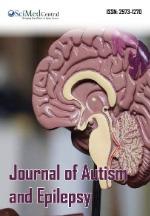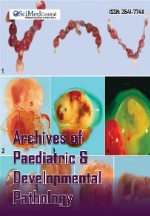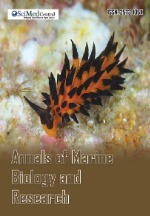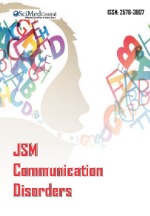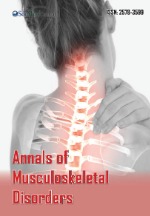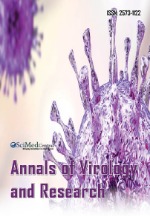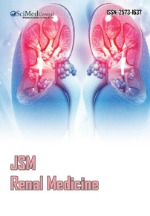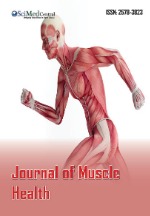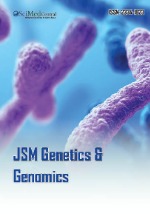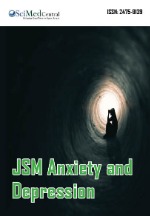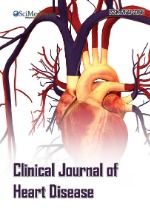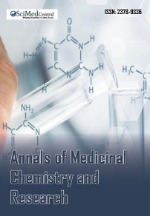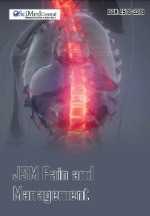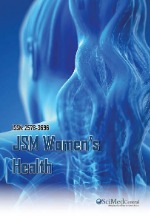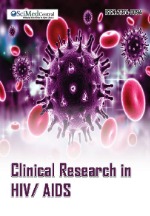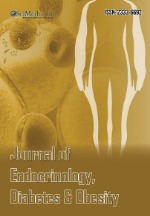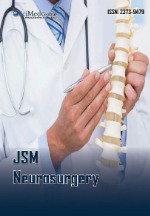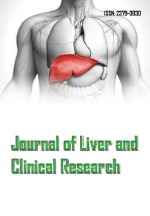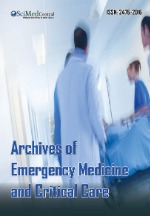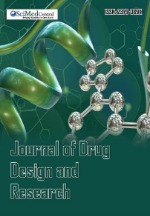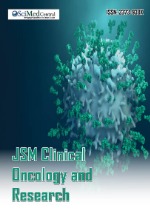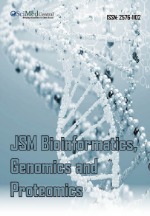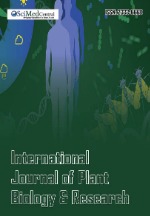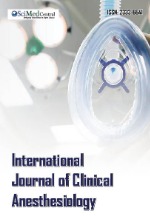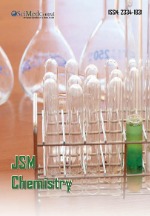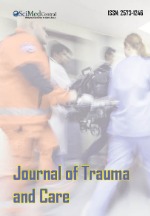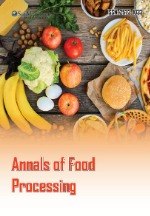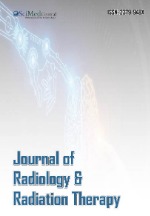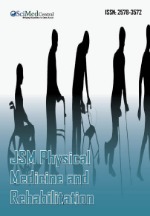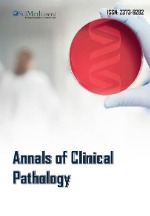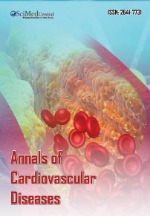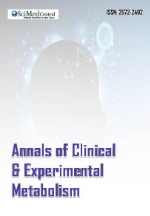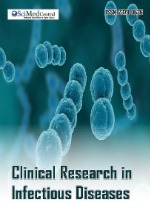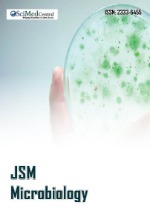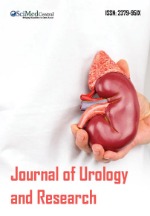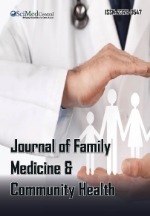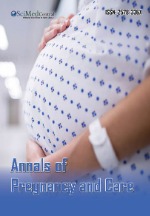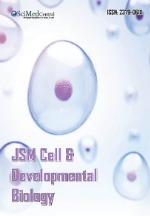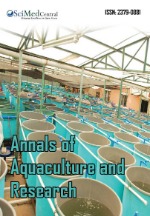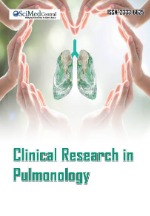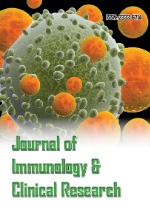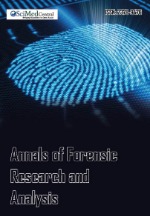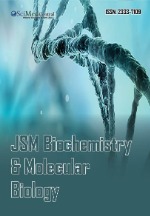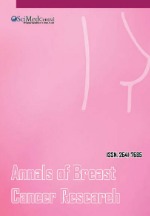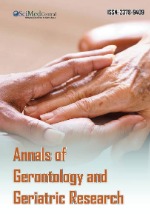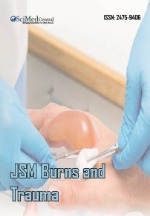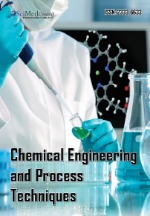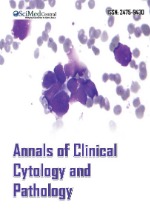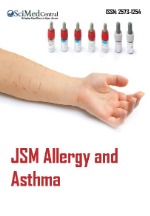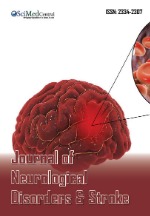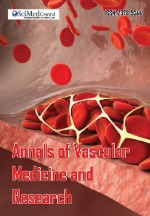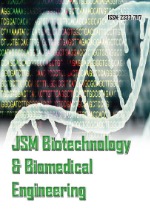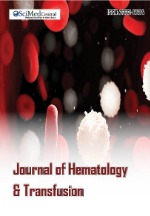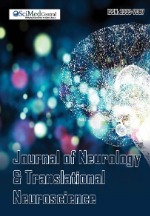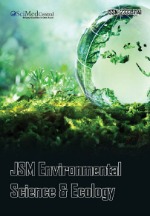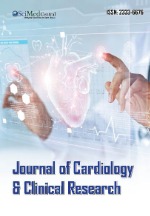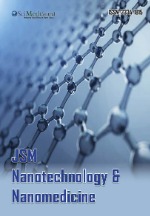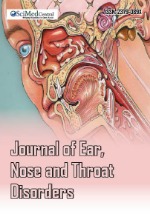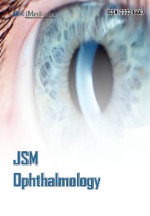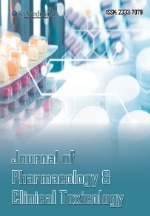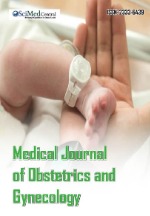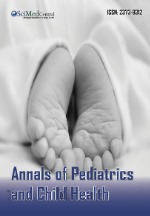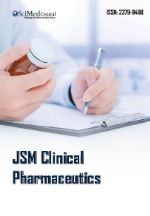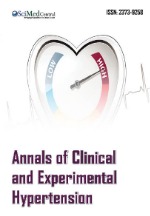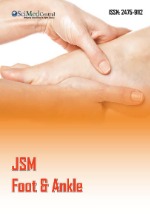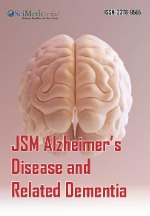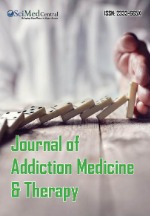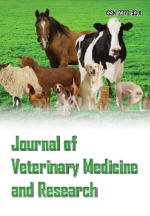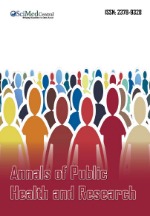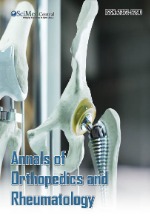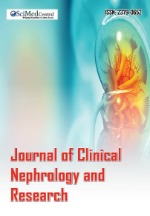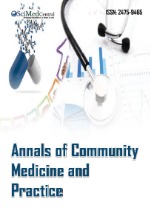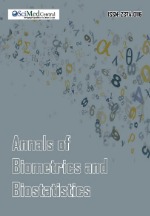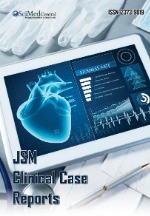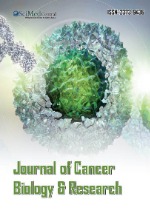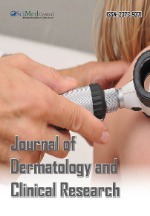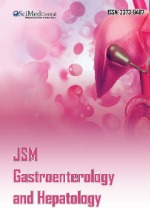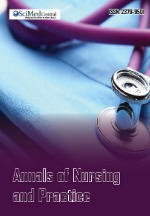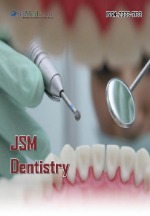Selenium Supplementation: Benefits and Drawbacks on Disease States
- 1. Department of Medicinal Chemistry, Massachusetts College of Pharmacy and Health Sciences, USA
Abstract
Selenium is a trace mineral that has been shown to have an important role in immune function and metabolism. It is involved in reducing inflammation from oxidative stress and free radicals. Insufficient selenium intake affects 1 billion people worldwide. Selenium deficiency symptoms are varied, however, most commonly reported are: depressed mood, confusion, muscle weakness, hair loss, and infertility. Despite selenium being a micronutrient, deficiency can have detrimental effect on patients either inducing autoimmune or pathogenic diseases. Currently, the most optimal approach to prevent the deficiency is through a balanced diet. Several studies have explored selenium supplementation to determine whether it can improve patients’ health and/or prevent reoccurrence of a disease. This review evaluates selenium, based on major body system diseases: skeletal, coronary, excretory and alimentary, cancer, HIV, AIDS, tuberculosis, etc., with discussion on the benefits of supplements.
Keywords
• Selenium
• Micronutrient
• Autoimmune
• Pathogenic
• HIV
Citation
Van Vo K, Priefer R (2023) Selenium Supplementation: Benefits and Drawbacks on Disease States. J Chronic Dis Manag 7(1): 1028.
INTRODUCTION
Selenium is an essential trace dietary element that is found in some grains, meats, dairy products, and seafoods [1]. It can act as an antioxidant and has been shown to slow the progression of certain diseases, in addition to strengthening the immune response [2]. The Food and Nutritional Board of United States Research Council recommends a daily intake of selenium of 50-200 µg [3]. Selenium inadequacy has been shown to have a dramatic effect on both autoimmune and pathogenic diseases. Conversely, consuming excess selenium can lead to only some minor side effects, such as nausea, nail discoloration, and hair loss [4].
Selenium deficiency has been implicated in some rare chronic ailments, such as Kashin-Beck disease (KBD). KBD can develop due to low selenium and iodine in soil endemically, and this leads to chronic inflammation of some joints. It is most often found in agricultural areas, such as North Korea and central China. KBD was initially suspected to be due to hypothyroidism (low iodine), which alters the development of bones and muscles in children. However, low selenium consumption has also been associated with this disease. Iodothyronine deiodinases requires selenium to convert inactive thyroxine to the active forms of the thyroid hormones: T3 and T4. Selenium insufficiency has also been demonstrated to have neurological effects. In a double- blind crossover study with 50 patients, 100 mg of selenium was supplemented daily for 5 weeks. Those with selenium supplements showed improved mood as early as 2.5 weeks into the study [5].
Individuals with low selenium levels have also been shown to make some individuals more vulnerable to various pathogens. In China, the relatively harmless Coxsackie B3 virus takes advantage of low dietary selenium to become virulent, causing cardiomyopathy in humans [6]. Outbreaks are typically controlled by simply adding more selenium to the soil and thus downstream into the diet. Another pathogen that relies on selenium deficiency is the human immunodeficiency virus (HIV). HIV can severely damage organs by increasing the production of reactive oxygen species (ROS), which subsequently attacks cell membranes, damages DNA, and causes cell death. Studies have shown that selenium supplements can slow the progression of HIV by working with glutathione peroxidase to convert these ROS into harmless products [4]. Selenium has also been shown to improve the CD4 count (T cell proliferation and differentiation) in HIV patients [7]. However, supplementation can promote HIV positive mother to transmit the virus to her child, by increasing genital tract shedding, intrapartum transmission, and breast milk transmission [8,9]. Herein, is an overview of the importance of selenium supplements and its effect on various autoimmune and pathogenic diseases.
AUTOIMMUNE
Skeletal
Selenium insufficiency has been linked to cases of skeletal muscle myopathy. In a study conducted by Moreno-Reyes, selenium concentrations were measured in 557 children (age range: 5 - 15) in Tibet, where selenium deficiency is endemic. Among these, 28 (5%) had normal levels of urinary iodine (5 - 25 µg/dL) while the remaining 529 (95%) were lower. Subjects with KBD had a significantly lowered urinary iodine concentration (1.2 µg/dL vs. 1.8 µg/dL, p-value < 0.001) coupled with an extremely depressed selenium concentration. The selenium levels of these participants were documented at 38% with < 5 ng/mL, 50% with < 8.7 ng/mL, and 89% with <27 ng/mL (normal range: 60 – 105 ng/mL) [10]. Traditionally, patients are required to have at least one of the following to be radiologically diagnosed with KBD: irregular erosions of the carpal or tarsal bones, irregular metaphyseal widening, irregular erosion of the metacarpal or metatarsal bones and phalanges, cone-shaped epiphyses of phalanges, fragmentation of the cone-shaped epiphyses, premature closure of metaphysis with subsequent shortening of metacarpal or metatarsal bones and phalanges, or talus collapse with osteosclerosis [10]. Among the participants, only 39 were radiologically diagnosed of KBD, with 21 of them having an undetectable selenium concentration of < 5 ng/mL (54%). The mean serum selenium and mean serum glutathione peroxidase concentrations were 7.7 ng/mL and 131 U/L, respectively; both of which were significantly lower than those in the controlled group (p value – selenium = 0.006, p value – glutathione peroxidase <0.001).
Zidovudine (AZT) induced myopathy is a disease originating from long-term use of this drug to treat HIV/AIDS. This can lead to muscle wasting, myalgia, and fatigue. Chariot and Bignani examined selenium deficiency in 40 HIV-infected participants: 20 with proximal myopathy symptoms and 20 without. Both groups were similar in age (25-68 years, mean: 37.4 and 24-61 years, mean: 35.5, respectively) [11]. The 20 HIV-infected participants with muscular symptoms had selenium concentrations notably lower than those without (0.25 –1.03 µmol/L vs 0.44 – 1.28 µmol/L, respectively) [11]. [Of note, the normal range of selenium in the general population is 0.70–1.30 µmol/L [11]]. Twelve of the HIV-infected patients with muscle myopathy symptoms and two without, had selenium levels < 0.5 µmol/L. The authors speculated that selenium deficiency was possibly associated with this skeletal muscle disorder. In addition to eliminating ROS produced as a result of AZT’s induced myopathy toxicity, selenium also has an anti-inflammatory effect [11]. Hence, it was suggested that selenium supplementation could clinically improve the side effects of muscular symptoms in these patients [11]. However, no follow-up study was conducted in providing selenium supplementation for these 40 HIV-infected participants.
Fibromyalgia, a chronic musculoskeletal pain syndrome, has also been correlated with low levels of selenium. Reinhard comparing selenium concentrations in 68 patients with fibromyalgia (mean age of 47 years: 9 males, 59 females), and 97 healthy volunteers (mean age of 46 years: 0 male, 97 females) [12]. There was a statistically significant difference in selenium levels between the 2 groups (p < 0.05). In the patient group, the median selenium concentration was 70.8 µg/l (range: 38.7– 153.7), while in the control, it was 76.9 µg /l (range: 49.5– 117.9) [12]. Despite their findings of a correlation between selenium levels and muscular pain, the researchers believed that more studies should be done on myopathy and selenium insufficiency due to potential inconsistencies.
A study conducted between 1974 and 1978 in New Zealand showed that selenium supplements did not in fact help with myopathy [4]. Here, 100 µg of selenium supplements were given to patients with selenium insufficiency and myopathy disorders in 3 different study trials. Even though there was a 16% difference between the two groups after selenium supplementation, this was deemed to not be a statically significant improvement in myopathy. Only 40 of the 72 patients recovered in the three trial groups (56%) while 19 of 48 patients recovered in the placebo group (40%) (p = 0.10) [4]. Ultimately, the authors stated that selenium had no benefit for patients with myopathy.
The effect of selenium on Duchenne’s muscular dystrophy was also evaluated by Backman et al. They found that serum selenium concentrations were slightly lower when compared to healthy children of the same age (p < 0.05) [13]. Subsequently, they conducted a study where 1 mg sodium selenite (which is 5 times the recommended daily intake of 200 µg) was given daily to 2 groups with Duchenne’s muscular dystrophy with a bodyweight > 50 kg. Group A was composed of 10 boys that were non-ambulatory (age ranging from 5.8 – 12.6 years) while Group B was composed of 6 boys of which 5 were ambulatory at the beginning of the study, and 1 who had not been studied prior (age ranging from 4.5 – 13.5 years). Measuring muscle function of the participants after 6 and 12 months was done via manual muscle, dynamometer, functional, and cardiopulmonary tests, as well as CT scan. Blood tests were also assessed every 3 months. In Group A, the progression rate of the disease was steady, however in Group B the muscle deterioration rate accelerated during the study. Ultimately, the addition of selenium yielded no statistically significant benefits for their muscle disorders.
Coronary
As discussed prior, selenium has both antioxidant properties and immunomodulatory function that can aid in immune defense. Kuklinski evaluated 61 participants with acute myocardial infarction and evaluated the effects of selenium on QTc intervals. These participants were randomly assigned into either 1) a selenium group who consumed, 500 µg selenium with 100 mg Coenzyme Q10 upon administration and a daily dose of 100 µg selenium with Coenzyme Q10 for 1 year thereafter, or 2) a placebo group. These 2 groups were distributed equally among age, gender, and medical therapy for cardiovascular diseases. In the control group, 40% had QTc prolongation of more than 440 msec (p<0.001) with their mean QTc increasing from 415 ± 38 to 448 ± 31 msec [14]. Conversely, the treatment group showed improved mean QTc with a decrease from 440 ± 61 to 391 ± 22 msec (0<0.001) [14]. Twenty-seven participants in the treatment group showed shortened, and 5 participants showed stable QTc intervals. After a 1 year follow up, 6 participants from the control group died from a myocardial infarction while only 1 in the treatment group passed away, from a non-cardiovascular related death. The authors concluded that selenium should be given to patients who are at risk for stable and unstable angina pectoris to prevent the development of worsening myocardial infarction.
Another randomized controlled trial focused on 406 patients with acute myocardial infarction and unstable angina. The patients were divided into 2 groups with both being advised to follow a fat reduced diet under the recommendation of American Heart Association; specifically, substituting unhealthy foods with healthier options, such as fruits, vegetables, and grains products (which contain high levels of vitamins, selenium, and other minerals). Group A was more strictly enforced in following this diet than Group B. Following a 1-year checkup, Group A’s participants’ cholesterol, cardiac events, and cardiac deaths were significantly lower than Group B. Group A’s cholesterol fell by 0.74 µmol/L, comparing to 0.32 µmol/L in Group B. Additionally, Group A’s events of cardiac complication was seen in only 50 patients, compared to 82 in Group B (p>0.001). Finally, Group A’s mortality was recorded at 21 patients, compared to 38 in Group B (p<0.01) [15]. The authors suggested that both the combination of vitamins and a mineral rich diet, including selenium can significantly benefit patients with acute myocardial infarction.
Interestingly, a meta-analysis evaluated 16 trials with 37,572 participants that were supplemented with an average of 100 µg selenium daily for a medium span of 12 months, on its relationship with cardiovascular diseases. Selenium formulations were either L-selenomethionine, sodium selenite, or selenium- enriched yeast. It was concluded that there was a significant association with a lowered risk of cardiovascular diseases if selenium were supplemented at concentration between 55-145 µg /L daily. There was no correlation with cardiovascular disease events when participants were receiving either too low or too high levels of selenium [16].
Conversely, Stranges looked at 1004 patients living in low selenium areas in the eastern United States who were randomized equally according to their age, BMI, baseline plasma selenium, gender, and smoking status. A selenium supplementation of 200 µg was supplied daily to patients who had no history of cardiovascular disease at baseline, but experienced major cardiovascular disease events [17]. After a 7.6 year follow up, Stranges concluded that there was no overall effect of selenium supplementation on cardiovascular disease prevention. There were 199 cardiovascular events, such as myocardial infarction and stroke (103 with selenium supplementation and 96 from placebo), as well as 71 cardiovascular-related deaths (40 with selenium supplementation and 31 from placebo). Of note, is that the amount of selenium administered was outside the range suggested by Zhang [16]. Regardless, there remains no recommendation for any treatment or prevention of cardiovascular diseases with selenium supplementation.
Excretory and Alimentary System
As discussed prior, the antioxidant property of selenium plays many roles in protecting the immune defense system. During an illness, the body can produce more oxidative stress which can attack and overwhelm the immune response, but can be managed or keep under-controlled with vitamin E and selenium. Even during hemodialysis, organs and immune systems will undergo stress that can be measured in increased selenium concentrations. Non-dialyzed and hemodialyzed chronic kidney disease (CKD) patients have a significantly lowered plasma selenium concentration, by 12.5 - 44.1% compared to healthy individuals [18]. A clinical study by Taccone-Gallucci, compared the selenium concentrations of 103 patients, who were on hemodialysis for end stage renal disease (ESRD) and 69 healthy volunteers, to determine whether the chronic treatment of statins affect the body’s immune system via altering the levels of selenium [19]. The hemodialysis patients were divided into 2 group: Group A included patients that were not on any statin treatments, while Group B included patients that had been on statins for at least 6 months. The selenium levels were statistically significantly lower in Group A than in the healthy volunteers of 81.65 ± 19.66 µg/L compared to 96.47 ± 15.62 µg/L (p<0.004). Additionally, the selenium levels were statistically higher in Group B than Group A (111.83 ± 18.82 µg/L versus to 81.65 ± 19.66 µg/L, respectively) (p<0.0001). Taccone-Gallucci proposed that statins have an indirect antioxidant effect that can be shown through the increased level of selenium.
Insufficiency in antioxidant levels can negatively affect body organ activity functions. Czuczejko compared the level of selenium, glutathione concentration, and glutathione peroxidase (role in protecting cell membranes from oxidative damage) among 50 healthy volunteers and 123 impaired-liver patients to determine the impact of deficient antioxidant levels on patients with chronic liver disease. The 123 participants were further divided into 2 groups. Group 1 consisted of 59 patients aged 24- 85 years, mean aged 54 years with a chronic viral Hepatitis B or C infection. Group 2 consisted of 64 patients aged 17-83 years, mean aged 52 years with alcoholics, autoimmune, or cryptogenic chronic liver disease. The levels of selenium and glutathione in the blood and plasma were significantly lower in the 2 groups when compared to the healthy volunteers [20]. When compared between the 2 groups, Group 1 has higher selenium concentrations than Group 2 regardless of the alanine transaminase (ALT) levels, 9.3 to 14.1% higher, respectively. Furthermore, the selenium concentration in patients from both groups with normal ALT ≤ 40 U/L were significantly lower than patients with elevated ALT (> 40 U/L). These observations may suggested to demonstrate that the deficient antioxidant levels can increase ROS production, hence can impact the pathogenesis of chronic liver disease [20].
Cancer
The antioxidant property of selenium is hypothesized to produce a protective effect towards immune systems and organs, which benefit in preventing the development of cancer and its subsequent mortality. In a study conducted by Clark, 1312 participants from 1983 to 1991 were evaluated to determine whether supplementing selenium prevented carcinoma progression in patients with a history of basal cell (BCC) or squamous cell carcinoma (SCC). The participants were recruited from 7 different dermatology clinics located throughout the US with a mean age of 63 years (range: 18-80). They were randomized into either a selenium treated (consuming 200 µg selenium oral daily) or placebo group, for 4.5 years. Patients were scheduled for dermatologic examination every 6 months and followed up for 6.4 years [21]. In the selenium treated group, there are 377
new cases of BCC and 218 new cases of SCC. In the placebo group, there are 250 new cases of BCC and 190 new cases of SCC [21], suggesting no benefits of the supplement. However, a significant reduction in other cancer incidences (colorectal, prostate, and lung) in the selenium treated compared to the placebo group, 77 vs 119 patients was reported (p = 0.001) [21]. Additionally, a greater reduction in total cancer mortality was observed in the selenium group compared to placebo with 29 and 57 deaths, respectively. The authors concluded that although the addition of selenium may not prevent patients from development skin cancer, it may reduce incidences and mortality from carcinoma at other sites.
A case-control study by Glattre et al., compared serum selenium levels in two groups: 43 thyroid cancer patients (12 males and 31 females) and 129 cancer-free volunteers (3 controls per case with corresponding sex, age, place of residence, and year of blood sampling) [22]. The serum selenium (S-Se) of both groups was collected from JANUS Serum bank. Glattre identified that cancer patients had significantly lowered S-Se levels than the control group, with their chance of having thyroid cancer increasing by 7.7 times if it dropped below 1.25 mmol/L [22]. The authors suggested that selenium is an important biomarker to monitor the prediagnostic phase of thyroid cancer development.
In another case-control study, Knekt et al., looked at the association of serum vitamin E and selenium levels among gastrointestinal cancer patients. These cases included: esophagus, stomach, duodenum, colon, and rectum cancer. During a follow up of 6-10 years, serum vitamin E and selenium levels were measured in 150 gastrointestinal cancer cases and 276 control patients [23]. The mean selenium concentration was 61.2 µg/L and 62.7 µg/L in men and women, respectively among gastrointestinal cancer patients. The control groups were 6% and 4.1% higher in men and women, respectively, Knekt et al., found the strongest correlation in men with upper gastrointestinal tract cancer (esophageal and stomach), but no correlation in selenium levels and cancer among women, when adjusted for smoking, cholesterol, vitamin E, and ß-carotene. A higher concentration of selenium and vitamin E did not appear to be significant in protecting against colorectal cancer. The authors concluded that there may be a lower risk of upper gastrointestinal tract cancer progression in patients with higher levels of selenium, regardless of vitamin E levels.
A study by Menkes et al., evaluated the relationship of vitamin A, ß-carotene, vitamin E, and selenium with respect to the risk of lung cancer. Serum samples from 99 patients with lung cancer from 1975-1983 were compared with 196 healthy volunteers. The results showed that increased levels of vitamins lead to a statistically significant lower risk of developing lung cancer. Low vitamin E levels showed a clear risk of lung cancer, regardless of selenium levels. Patients who had a low concentration of selenium (≤12.3 µmol/dL) and a low vitamin E level (<9.9 mg/L), showed a 1.4 times higher likelihood of having lung cancer [24]. Patients who had a high concentration of selenium (>12.3 µmol/dL) with a low vitamin E level showed a 3.5 times higher likelihood of developing cancer (2.5 times increase in comparison to low selenium and low vitamin E). The positive correlation stayed consistent even when the vitamin E was lowered to the range of 9.9 to 12.6 mg/L. Conversely, the results showed the opposite when vitamin E concentration was high (>12.6 mg/L). With a high concentration of vitamin E, patients who also had a high level of selenium had a lowered risk of developing lung cancer compared to those having a low level of selenium. Menkes findings of the positive relationship between selenium and risk of lung cancer contradicts other studies’ results [25,26]. As no other study has been done in respective on selenium alone to show its association with lung cancer, it is difficult to confirm the positive linear relationship reported.
PATHOGENIC
HIV
Micronutrient deficiency is commonly seen during pregnancy, yet supplementation is not always the answer. Selenium supplementation for HIV-infected pregnant women has been reported to increase genital shedding, resulting in a higher risk of transmission to the fetus [29]. Sudfeld conducted a study from 2003 to 2006, on 420 HIV-infected pregnant women, with gestation at 12-27 weeks, on whether selenium supplementation can lead to HIV transmission through breast milk. Participants were divided into receiving either 200 µg of selenium and a placebo (209 and 211 patients, respectively), in addition to daily supplementation of ferrous gluconate, folic acid, 4 weekly dose of malaria chemoprophylaxis, and multivitamins (vitamin B, C, E) for prenatal care from the time of enrollment to 6 months postpartum. Detectable HIV-1 RNA in breast milk (>50 copies/ mL) was statistically significantly increased among HIV-infected pregnant women in the selenium supplemented group (76 of 209, 36.4%) compared to the placebo group (58 of 211, 27.5%) (p=0.05) [8]. Among women who did not receive Highly Active Antiretroviral Therapy (HAART), selenium supplementation also led to significantly higher detectable HIV-1 RNA levels in breast milk compared to placebo (37.8% versus 27.5%, respectively) (p<0.01). The detectable viral load was more pronounced among primiparous women who did not receive HAART (53.1% versus 23.6%, respectively) than multiparous (p<0.01).
A study conducted by Kupka et al., examined 949 HIV-infected pregnant women with gestation at 12-27 weeks, in sub-Saharan Africa, on the association between plasma selenium levels with patient’s survival and CD4 count. With a 5.7-year median follow up, 306 patients passed away while the survivor’s mean plasma selenium level remained low at 1.58 ± 0.30 µmol/L [27]. The study showed a significant association between selenium levels and mortality risk, with each 0.1 µmol/L increase in plasma selenium concentration leading to a 5% decreased risk of mortality. High plasma selenium levels correlated to increased CD4 cell count in the first year of follow up (p=0.02). However, selenium did not prevent the ultimate progression of a low CD4 cell count < 200 cells/mm3 long term. Another study, also conducted by Kupka et al., on 913 HIV-infected pregnant women in Tanzania, contradicted his previous results. Here, selenium supplements did not correlate with HIV disease progression in regard to pregnancy outcomes [28]. The selenium treated group did not show any significant effect on the CD3, CD4, and/or CD8 cell counts compared to placebo. No improvement on adults’ mortality rates was observed within this study [28]. Selenium supplements did have an association with the risk of fetal loss before delivery, with 58 fetal deaths (35 from selenium group, 23 from placebo group) (p=0.08) [28]. However, the risk of infant mortality after 42 days of delivery was significantly reduced, with only 8 deaths reported from selenium group compared to 19 from the placebo group (p=0.048) [28].
A randomized controlled trial performed with 200 women in Kenya receiving nutrient supplements including B-complex vitamins, vitamins C and E, and 200 µg of selenium, and 200 participants receiving placebo over a 6-week period was conducted [29]. The authors found a greater risk of vaginal shedding of HIV-1-infected cells (2.5 times), and higher HIV-1 RNA quantity (0.37 log10 copies/swab) in vaginal secretion in the supplemented participants compared to placebo (p=0.001 and p=0.004, respectively). Compared to placebo, more of the selenium-treated patients were found to have HIV-infected cells in their vaginal secretions (56 women (31.3%) vs. 20 women (16.9%), respectively). Subsequently, when excluding patients who were shedding vaginal infected cells at baseline, the micronutrient supplemented group still displayed a significantly higher incident of shedding (23.4%) compared to placebo (9%) (p=0.001). An increase in vaginal HIV shedding cells was the highest among patients with normal baseline selenium levels. Furthermore, higher HIV-1 genital secretions were associated with higher mother-to-child and sexual HIV transmission. Accordingly, supplementation of micronutrients, including selenium, in HIV-infected mothers showed an increased likelihood of infectivity. The study’s finding agreed with others’ that there was an increased risk of HIV-1 RNA shedding with high plasma selenium concentration (≥114 µg/l) [9] (Table 1).
Table 1: Outcomes of selenium supplementation based on study population with HIV/AIDS
|
Study size |
Outcomes |
Ref |
|
420 HIV-infected pregnant women with gestation at 12- 27 weeks (209 patients received 200 µg of selenium, 211 patients received placebo) |
- Selenium supplementation increased detectable HIV-1 RNA levels in breast milk significantly. |
[8] |
|
949 HIV-infected pregnant women with gestation at 12-27 weeks in sub-Saharan Africa |
- Mothers’ mortality risk was decreased in selenium group.
- Low CD4 cell count progression was not prevented in selenium group. |
[27] |
|
913 HIV-infected pregnant women with gestation at 12-27 weeks in Tanzania |
|
[28] |
|
400 HIV-1 infected women (200 patients received multivitamin including 200 µg selenium, 200 patients received placebo) over 6-week period |
- Higher risk of vaginal shedding of HIV-1 infected cells in supplemented patients.- Higher HIV-1 RNA quantity in vaginal secretion in supplemented patients. |
[29] |
|
300 ART-naïve HIV-infected patients (151 patients received 200 µg selenium, 149 patients received placebo) in Rwanda over 2-year period |
- Significant reduction rate of CD4+ cell depletion in selenium- treated group. |
[31] |
|
196 HIV-positive patients |
- Higher hospital administration for opportunistic infections and HIV-related conditions in placebo-treated group. |
[32] |
|
125 HIV-infected drug users in Miami |
- Increased risk of HIV-related mortality in selenium deficient patients. |
[33] |
|
95 HIV-infected patients |
- Low selenium were correlated with low CD4 cell count.- Low selenium and CD4 cell counts were also correlated with death and occurrence of AIDS-defining opportunistic infections. |
[34] |
|
12 patients with AIDS, supplemented with selenium |
- No improvements in CD4 cell counts in selenium supplemented group. |
[35] |
|
19 symptomatic HIV-infected male patients with AIDS or ARC coinfection supplemented with 400 µg selenium daily for 70 days |
- Overall health improvements in majority of selenium supplemented patients. |
[36] |
|
63 HIV-infected drug users (28 patients received 200 µg/day, 35 selenium, 35 patients received placebo) over 12-month period |
- Significant less decline of CD4 cell count in selenium arm.- Psychological improvements in selenium arm. |
[37] |
However, selenium deficiency has been reported to be associated with increased mortality during HIV infection, while supplementation has been linked to morbidity reduction [30]. In a study carried out by Chariot et al., they reported that levels of selenium are impaired in HIV-infected patients [11]. Observational studies have shown that HIV-positive patients who are not receiving antiretroviral therapy (ART) usually display deficiency of micronutrients, including selenium, and this is associated with low CD4+ T-cell counts, worsening HIV progression, and mortality [31]. In a double blinded, placebo- controlled trial conducted in Rwanda with 300 HIV-infected adults (CD4+ cell count between 400-650 cells/µl), 151 were assigned to receive 200 µg selenium and 149 to placebo, for 2 years, with re-assessment scheduled every 6 months. The rate of CD4+ cell depletion significantly reduced in the selenium-treated group by 43.8% from a mean of 3.97 cells/µl compared to 2.23 cells/µl per month in the ART-naïve HIV patients [31]. Thus, supplementation of selenium offered a low-cost alternative for HIV-positive patients to slow the progression of the disease prior to the introduction of ART.
Burbano conducted a randomized, double-blinded study with 196 HIV-positive patients to compare the hospital admission rates among selenium supplemented patients versus placebo, evaluating problems related to opportunistic infections, psychiatric diagnoses, and other HIV-related conditions [32]. This 2-year study enrolled 186 patients randomized into either selenium supplemented group (89) receiving 200 µg/day, or a placebo group (97). Over the 2-year course, 58 patients were hospitalized (26 from selenium, 32 from placebo) for multiple diagnosis: opportunistic infection, HIV-related conditions, psychiatric, drug-abused related problems, etc. Higher hospital administration for opportunistic infections and HIV-related conditions was observed in the placebo group compared to the selenium supplementation arms than the selenium (94% vs. 42%, respectively) (p=0.01). Independent from patients receiving ART, hospitalization occurred significantly higher in placebo-treated patients compared to selenium-treated (34% vs. 10%, respectively) (p=0.04). The authors concluded that supplementation of selenium can help decrease total hospital admission rates, hence decreasing the cost of hospitalization for HIV patients [32].
The decline of selenium serum concentrations is hypothesized to accelerate HIV viral replication and disease progression [33]. A study looking at 125 HIV-infected drug-users in Miami, over a period of 3.5 years, evaluated the impact of poor overall nutrient status on patient’s survival. It was reported deficiencies in vitamin A, B6, B12, zinc, and/or selenium influenced the progression of HIV-1 disease and mortality. With selenium deficiency, patients were 10.8 times more likely of having HIV-related mortality, independent of other factors, such as nutritional deficiencies and HAART treatment (p<0.002) [33]. Therefore, the author suggested that the decline in selenium levels is a significant predictor of mortality in HIV-infected patients.
Another study conducted with 95 HIV-infected patients, divided into 4 groups according to their CD4 cell counts (<50/ mm3, 50-200/mm3, 200-400/mm3, >400/mm3), examined the correlation between selenium deficiency and death [34]. Low selenium correlated with CD4 cell counts. During a follow-up, serum selenium and CD4 cell count were found to be correlated with death and the occurrence of AIDS-defining opportunistic infections [34]. It was concluded that in patients with low selenium levels, there is a further impact on their CD4 cell count and health. However, these findings contradicted a study conducted by Cirelli et al. [35]. Similar to the previous study, low serum selenium levels were lower in HIV/AIDS patients, while normal in symptom free HIV-positive patients. However, with the twelve patients who were supplemented with selenium showed no improvement in CD4 cell counts [35]. In another study conducted by Olmsted et al., 19 symptomatic HIV-infected male patients with AIDS or AIDS-related complex (ARC) coinfection were supplemented daily with 400 µg selenium for 70 days to examine their intestinal absorption ability [36]. The majority of patients displayed an increased blood selenium level (74%), with 1 patient reported worsening of his/her health, and another 4 reporting no change. Patients with increasing selenium levels also reported improvements with their overall health, including improved appetite, memory, and mood, as well as lessened relapse occurrence. Olmsted findings highlighted that selenium absorption is not hindered in HIV/AIDS patients and could further benefit those by improving the quality of life, in addition to lowering HIV viral load and CD4+ cell count reduction [36].
Yet another study randomized 63 HIV-infected drug users into, supplementation of 200 µg/day selenium or placebo for 12 months [37]. Over the course of follow-up, selenium treated patients had higher plasma selenium concentrations than placebo (123.5 ± 23 mg/L vs. 108.7 ± 15mg/L, respectively) (p=0.002). Patients in the selenium arm also exhibited significantly less decline in CD4 cell count compared to placebo-treated patients (15% vs. 53%, respectively) (p=0.002). Additionally, selenium treated patients also reported improvements in psychological outcomes, such as increased “vigor” and decreased anxiety compared to placebo [37]. However, improvements of depression or distress was not reported in either group.
Tuberculosis
Tuberculosis (TB) is an infectious lung disease that is estimated to kill 2 million people annually [38]. Arising from the infection, inadequate nutrients are commonly seen in tuberculosis patients. Poor nutrients may further increase the risk for patients in progressing into the active stage of infection and delay the recovery period. Many immunocompromised HIV- 1 infected patients are at high risk for opportunistic infections due to a weakened immune system. Selenium has been shown to support T-cell proliferation and differentiation. Selenium may also play a role in clearing TB infections within HIV patients [39]. It has been suggested that micronutrients need to be supplemented to counterbalance the reactive oxidative stress caused by HIV and/or TB infections. From 1999 to 2001, Shor- Posner conducted a study comparing 12 cases of HIV-infected drug abusers (including crack, cocaine, marijuana, and heroin) that later developed a mycobacterial infection (9 were infected with TB and 3 were infected with atypical mycobacterium species) to 32 healthy volunteers. Of these 12 cases, 8 were placed in a placebo group, while 4 on selenium supplementation of 200 µg /d for 24 months. The authors concluded that patients having high CD4 cell count (> 200 mm³), malnutrition (serum albumin level ≤ 3.5 g/d), and low selenium level (≤ 135 µg /L) had to a significant risk for the development of mycobacterial infection. Specifically, HIV patients with low plasma selenium levels were 13 times more likely of develop a mycobacterial infection compared to those with regular selenium levels. It was concluded that selenium supplementation of 200 µg /d can delay the development of mycobacterial disease progression.
Another study revealed that low levels of selenium can also increase the risk of developing a mycobacterial infection among HIV patients. Patients with a TB infection, especially those co- infected with HIV, usually display malnutrition and wasting. Hence, the authors conducted a cross-sectional study comparing the plasma HIV load and plasma micronutrient concentrations (retinol, α-tocopherol, carotenoids, zinc, and selenium) in 579 HIV-positive and 222 HIV-negative patients with pulmonary TB in Malawi [30]. Selenium deficiency was compared at different levels of wasting throughout the study. The selenium concentration showed a significant decrease with an increase of plasma HIV load in non-wasted and severely wasted patients with TB, yet no association with mild and moderate wasting was observed. Lettow concluded that selenium deficiency is associated with a high plasma HIV load in patients coinfected with pulmonary TB. However, the authors were unsure whether the addition of selenium alone could benefit in either morbidity or mortality.
Steinbrenner conducted a meta-analysis of 4 studies (2 each from Africa and Asia) and highlighted that patients with TB had a significantly lower serum selenium levels, compared to healthy volunteers [38]. According to 1 study, serum selenium levels were low in both HIV- negative and -positive patients with a TB infection [40]. However, two other studies found serum selenium concentrations to be lower in TB patients coinfected with HIV [41,42]. One study observed an increase in selenium levels after chemotherapy in patients, while the others did not see any changes [43]. Hence, the effect of selenium concentration on tuberculosis patients was deemed to be uncertain [38]. In addition, Steinbrenner also noticed a peculiar side effect of weight gain in patients who were supplemented with multi- micronutrients after chemotherapy [38].
Others
Beyond human immunodeficiency virus (HIV), micronutrients deficiency was also commonly seen in patients with Helicobacter pylori (H. pylori) infected patients. However, plasma selenium concentration was not affected in these patients, even once after H. pylori infection is eradicated. There was no evidence showing selenium supplementation helped in preventing H. pylori infection nor gastric cancer [38]. Selenium was also observed to show benefits for other gram-negative bacteria infections specifically, Escherichia coli (E. coli). Selenium supplementation in conjunction with ciprofloxacin showed a greater efficacy compared to ciprofloxacin alone in preventing the development of E. coli-infected bacterial prostatitis in rats [38]. Furthermore, cattle with selenium deficiency showed to be at a higher risk for E. coli and Staphylococcus aureus infection. Selenium with vitamin E supplementation among cattle showed benefits by improving the neutrophils’ intracellular killing mechanism against these pathogens [38] (Table 2).
Table 2: Outcomes of selenium concentration based on disease states.
|
Disease state |
Outcomes |
Ref. |
|
Kashin-Beck disease (KBD) |
- Significantly lower iodine and selenium concentration in subjects with KBD compared to control. |
[10] |
|
Myopathy |
- Lowered selenium concentration in HIV-infected patients zidovudine-treated with muscular myopathy symptoms compared to those without symptoms. - Selenium supplementation did not show improvements in patients with myopathy. |
[4,11] |
|
Fibromyalgia |
- Significantly lowered selenium levels in patients with fibromyalgia compared to healthy volunteers. |
[12] |
|
Duchenne’s muscular dystrophy (DMD) |
- Selenium supplementation yielded no statistically significant benefits for patients with DMD. |
[13] |
|
Myocardial Infarction |
- Supplementation of selenium decreased or stable QTc intervals among participants with acute myocardial infarction. - Significantly lowered cholesterol, cardiac events, cardiac deaths among patients with acute myocardial infarction and unstable angina who strictly followed healthier diets (rich in minerals, including selenium) compared to patients who did not. - Selenium supplementation prevented cardiovascular-related death compared to control group. - Significantly lowered risk of cardiovascular disease with daily mean of 100 µg selenium supplementation. - No overall benefits with 200 µg selenium supplements on cardiovascular events prevention (myocardial infarction, stroke, cardiovascular-related deaths) |
[14-17] |
|
Renal Disease |
- Significantly lowered plasma selenium concentration among patients with non-dialyzed or hemodialyzed CKD compared to healthy volunteers. - Statistically significantly lowered selenium levels among patients on hemodialysis for ESRD with no additional statin therapy compared to healthy volunteers or those who are on statin therapy. |
[18,19] |
|
Liver Disease |
- Significantly lowered selenium concentration in blood and plasma among patients with chronic viral Hep B and/or C or chronic liver disease compared to healthy volunteers.
≤ 40 U/l than with elevated ALT > 40 U/l. |
[20] |
|
Carcinoma (BCC and SCC) |
- Higher new cases of BCC and SCC of selenium supplementation with daily administration of 200 µg compared to placebo. - Greater reduction in total cancer mortality in selenium-treated group. |
[21] |
|
Thyroid Cancer |
-Significantly lowered serum selenium in thyroid cancer patients compared to healthy volunteers. - Higher chance for patients of having thyroid cancer (7.7 times) if selenium level dropped below 1.25 mmol/L. |
[22] |
|
Gastrointestinal Cancer |
cancer. |
[23] |
|
Lung Cancer |
- High concentration of selenium (>12.3 µmol/dL) with low vitamin E showed a 3.5 times higher chance of developing lung cancer (2.5 times higher compared to low selenium concentration (>12.3 µmol/dL). |
[24] |
|
Human Immunodeficiency Virus Infection |
- Among HIV infected pregnant women, selenium supplementation increased detectable HIV-1 RNA levels in breast milk and vaginal secretion, increased fetal death before delivery, while reduced infant mortality (42 days after delivery). - Contradicting of mothers’ mortality risk with selenium supplementation. - Among HIV infected patients, selenium deficiency showed to increase risk in mortality. Hence, patients’ overall health (including mental health) was improved with supplementation. - Low CD4 cell count progression was not prevented/ shown to be affected in selenium group among HIV-infected mothers. - Contradicting of CD4 cell counts results among selenium treated patients. |
[8, 27-37] |
|
Tuberculosis infection |
infection compared to those with regular selenium levels.
- Significantly lowered serum selenium level among patients with tuberculosis with or without HIV co- infection, compared to healthy volunteers. |
[30,38,39] |
|
Helicobacter pylori infection |
- Plasma selenium concentration was not affected in patients with H. pylori infection. - No evidence showing selenium supplementation can help in preventing H. pylori infection nor gastric cancer. |
[38] |
|
Escherichia coli infection |
- Selenium supplementation in conjunction with ciprofloxacin showed a better efficacy than ciprofloxacin alone in preventing the development of E. coli-infected bacterial prostatitis in rats. - Cattle with selenium deficiency showed to be at a higher risk for E. coli and Staphylococcus aureus infection. |
[38] |
CONCLUSION
Selenium is an essential micronutrient in our immune system that possesses antioxidant properties to protect organs against excess ROS, that could potentially lead to significant health concerns. Selenium insufficient is a notably the culprit leading to many disease complications, such as Kashin-Beck disease, Duchenne’s muscular dystrophy, and even thyroid cancer. Hence, selenium supplementation has been suggested to benefit the patient at risk to prevent the progression of these diseases and further support the patients’ immunity.
However, selenium supplementation has also yielded contradicting outcomes among different disease states, and even within a certain disease state. Therefore, more detailed research trials should be conducted before a conclusion and recommendations can be made regarding the benefits and/or detrimental effects of selenium supplementation. As an example, within the HIV-positive patient population, low plasma selenium concentration has been correlated with higher incidence of reoccurrence and/or mortality. Selenium supplementation displays further benefits through better health outcomes, including less hospital adminissions. Conversely, specifically with HIV-infected mothers, it is important that selenium supplementation is not recommended due to an increased risk of infectivity to their offspring and risk of infant mortality. This contradiction on the benefits of selenium within this single disease state highlights the necessity for further studies on the use of this micronutrient.
FUNDING DISCLOSURES
None of the authors have received funding from any company, institution, foundation, grant, etc related to the work described within the text. There are no conflicts of interest with any of the authors.
ACKNOWLEDGMENTS
The authors wish to thank the School of Pharmacy at the Massachusetts College of Pharmacy and Health Sciences University for financial support of this project.
REFERENCES
- Sanmartin C, Plano D, Font M, Palop JA. Selenium and Clinical Trials: New Therapeutic Evidence for Multiple Diseases. Curr Med Chem. 2011; 18: 4635-4650.
- Broome CS, McArdle F, Kyle JAM, Andrew F, Lowe NM, Hart CA, et al. An increase in selenium intake improves immune function and poliovirus handling in adults with marginal selenium status. Am J Clin Nutr. 2004; 80: 154-162.
- Navarro-Alarcon M, Lopez-Martinez MC. Essentiality of selenium in the human body: relationship with different disease. Sci Total Enrion. 2000; 249: 347-371.
- Chariot P, Bignani O. Skeletal muscle disorders associated with selenium deficiency in humans. Muscle Nerve. 2003; 27: 662-668.
- Benton D, Cook R. Selenium supplementation improves mood in a double-blind crossover trial. Psychopharmacology. 1990; 102: 549- 550.
- Bellinger FB, Raman AV, Reeves MA, Berry MJ. Regulation and function of selenoproteins in human disease. Biochem J. 2009; 422: 11-22.
- Baum MK, Miguez-Burbano MJ, Campa A, Shor-Posner G. Selenium and Interleukins in Persons Infected with Human Immunodeficiency Virus Type 1. J Infect Dis. 2000; 182: S69-S73.
- Sudfeld CR, Aboud S, Kupka R, Mugusi FM, Fawzi WW. Effect of selenium supplementation on HIV-1 RNA detection in breast milk of Tanzanian women. Nutrition. 2014; 30: 1080-1081.
- Kupka R, Msamanga GI, Xu C, Anderson D, Hunter D, Fawzi WW. Relationship between plasma selenium concentrations and lower genital tract levels of HIV-1 RNA and interleukin type 1β. Eur J Clin Nutr. 2007; 61: 542-547.
- Moreno-Reyes R, Suetens C, Mathieu F, Begaux F, Zhu D, Rivera MT, et al. Kashin-Beck osteoarthropathy in rural Tibet in relation to selenium and iodine status. N Engl J Med. 1998; 339: 1112-1120.
- Chariot P, Dubreuil-Lemaire ML, Zhou JY, Lamia B, Dume L, Larcher B, et al. Muscle involvement in human immunodeficiency virus-infected patients is associated with marked selenium deficiency. Muscle Nerve. 1997; 20: 386-389.
- Reinhard P, Schweinsberg F, Wernet D, Kötter I. Selenium status in fibromyalgia, Toxicol Lett. 1998; 96: 177-180.
- Backman E, Nylander E, Johansson I, Henriksson KG, Tagesson C. Selenium and vitamin E treatment: of Duchenne muscular dystrophy: no effect on muscle function, Acta Neurol Scand. 1988; 78: 429-435.
- Kuklinski BE, Weissenbacher A, Fähnrich. Coenzyme Q10 and antioxidants in acute myocardial infarction. Mol Aspects Med. 1994; 15: s143-s147.
- Singh RB, Rastogi SS, Verma R, Laxmi B, Singh R, Ghosh S, et al. Randomised controlled trial of cardioprotective diet in patients with recent acute myocardial infarction: results of one year follow up. BMJ. 1992; 304: 1015-1019.
- Zhang X, Liu C, Guo J, Song Y. Selenium status and cardiovascular diseases: meta-analysis of prospective observational studies and randomized controlled trials. Eur J Clin Nutr. 2016; 70: 162-169.
- Stranges S, Marshall JR, Trevisan M, Natarajan R, Donahue RP, Combs GF, et al. Effects of Selenium Supplementation on Cardiovascular Disease Incidence and Mortality: Secondary Analyses in a Randomized Clinical Trial. Am J Epidemiol. 2006; 163: 694-699.
- Zachara BA, Gromadzi?ska J, Wasowicz W, Zbróg Z. Red blood cell and plasma glutathione peroxidase activities and selenium concentration in patients with chronic kidney disease: a review. Acta Biochim Pol. 2006; 53: 663-677.
- Taccone-Gallucci M, Noce A, Bertucci P, Fabbri C, Manca-di- Villahermosa S, Della-Rovere FR, et al. Chronic treatment with statins increases the availability of selenium in the antioxidant defence systems of hemodialysis patients. J Trace Elem Med Biol. 2010; 24: 27-30.
- Czuczejko J, Zachara BA, Staubach-Topczewska E, Halota W, Kedziora J. Selenium, glutathione and glutathione peroxidases in blood of patients with chronic liver diseases. Acta Biochim Pol. 2003; 50: 1147- 1154.
- Clark LC, Combs Jr GF, Turnbull BW, Slate EH, Chalker DK, Chow J, et al. Effects of Selenium Supplementation for Cancer Prevention in Patients with Carcinoma of the Skin. JAMA. 1996; 276: 1957-1963.
- Glattre E, Thomassen Y, Thoresen SO, Haldorsen T, Lund-Larsen PG, Theodorsen L, et al. Prediagnostic Serum Selenium in a Case-Control Study of Thyroid Cancer. Int J Epidemiol. 1989; 18: 45-49.
- Knekt P, Aromaa A, Maatela J, Alfthan G, Aaran RK, Teppo L, et al. Serum vitamin E, serum selenium and the risk of gastrointestinal cancer. Int J Cancer. 1988; 42: 846-850.
- Menkes MS, Comstock GW, Vuilleumier JP, Helsing KJ, Rider AA, Brookmeyer R. Serum beta-carotene, vitamins A and E, selenium, and the risk of lung cancer. N Engl J Med. 1986; 315: 1250-1254.
- Wald N, Idle M, Boreham J, Bailey A. Low serum-vitamin-A and subsequent risk of cancer. Preliminary results of a prospective study. Lancet. 1980; 8199: 813-815.
- Kark JD, Smith AH, Switzer BR, Hames CG. Serum Vitamin A (Retinol) and Cancer Incidence In Evans County, Georgia. J Natl Cancer Inst. 1981; 66: 7-16.
- Kupka R, Msamanga GI, Spiegelman D, Morris S, Mugusi F, Hunter DJ, et al. Selenium Status Is Associated with Accelerated HIV Disease Progression among HIV-1–Infected Pregnant Women in Tanzania. J Nutr. 2004; 134: 2556-2560.
- Kupka R, Mugusi F, Aboud S, Msamanga GI, Finkelstein JL, Spiegelman D, et al. Randomized, double-blind, placebo-controlled trial of selenium supplements among HIV-infected pregnant women in Tanzania: effects on maternal and child outcomes. Am J Clin Nutr. 2008; 87: 1802-1808.
- McClelland RS, Baeten JM, Overbaugh J, Richardson BA, Mandaliya K, Emery S, et al. Micronutrient Supplementation Increases Genital Tract Shedding of HIV-1 in Women: Results of a Randomized Trial. J Acquir Immune Defic Syndr. 2004; 37: 1657-1663.
- Lettow MV, Harries AD, Kumwenda JJ, Zijlstra EE, Clark TD, Taha TE, et al. Micronutrient malnutrition and wasting in adults with pulmonary tuberculosis with and without HIV co-infection in Malawi. BMC Infect Dis. 2004; 4: 61.
- Kamwesiga J, Mutabazi V, Kayumba J, Tayari JC, Uwimbabazi JC, Batanage G, et al. Effect of selenium supplementation on CD4+ T-cell recovery, viral suppression and morbidity of HIV-infected patients in Rwanda: a randomized controlled trial. AIDS. 2015; 29: 1045-1052.
- Burbano X, Miguez-Burbano MJ, McCollister K, Zhang G, Rodriguez A, Ruiz P, et al. Impact of a selenium chemoprevention clinical trial on hospital admissions of HIV-infected participants. HIV Clin Trials. 2015; 3: 483-491.
- Baum MK, Shor-Posner G, Lai S, Zhang G, Lai H, Fletcher MA, et al. High Risk of HIV-Related Mortality Is Associated With Selenium Deficiency. J Acquir Immune Defic Syndr Hum Retrovirol. 1997; 15: 370-374.
- Constans J, Pellegrin JL, Sergeant C, Simonoff M, Pellegrin I, Fleury H, et al. Serum Selenium Predicts Outcome in HIV Infection. J Acquir Immune Defic Syndr Hum Retrovirol. 1995; 10: 392.
- Dworkin BM. Selenium deficiency in HIV infection and the acquired immunodeficiency syndrome (AIDS). Chem Biol Interact. 1994; 91: 181-186.
- Olmsted L, Schrauzer GN, Flores-Arce M, Dowd J. Selenium supplementation of symptomatic human immunodeficiency virus infected patients. Biol Trace Elem Res. 1989; 20: 59-65.
- Shor-Posner G, Lecusay R, Miguez MJ, Moreno-Black G, Zhang G, Rodriguez N, et al. Psychological burden in the era of HAART: impact of selenium therapy. Int J Psychiatry Med. 2003; 33: 55-69.
- Steinbrenner H, Al-Quraishy S, Dkhil MA, Wunderlich F, Sies H. Dietary selenium in adjuvant therapy of viral and bacterial infections. Adv Nutr. 2015; 6: 73-82.
- Shor-Posner G, Miguez MJ, Pineda LM, Rodriguez A, Ruiz P, Castillo G, et al. Impact of selenium status on the pathogenesis of mycobacterial disease in HIV-1-infected drug users during the era of highly active antiretroviral therapy. J Acquir Immune Defic Syndr. 2002; 29: 169- 173.
- van Lettow M, Harris AD, Kumwenda JJ, Zijlstra EE, Clark TD, Taha TE, et al. Micronutrient malnutrition and wasting in adults with pulmonary tuberculosis with and without HIV co-infection in Malawi. BMC Infec Dis. 2004; 1: 61.
- Kassu A, Yabutani T, Mahmud ZH, Mohammad A, Nguyen N, Huong BTM, et al. Alterations in serum levels of trace elements in tuberculosis and HIV infections. Eur J Clin Nutr. 2006; 5: 580-586.
- Ramakrishnan K, Shenbagarathai R, Kavitha K, Thirumalai kolundusubramanian P, Rathinasabapati R. Selenium levels in persons with HIV/tuberculosis in India, Madurai City. Clin Lab. 2012; 58: 165-168.
- Ulukavak Ciftci T, Ciftci B, Yis O, Guney Y, Bilgihan A, Ogretensoy M. Changes in serum selenium, copper, zinc levels and cu/zn ratio in patients with pulmonary tuberculosis during therapy. Biol Trace Elem Res. 2003; 95: 65-71.


